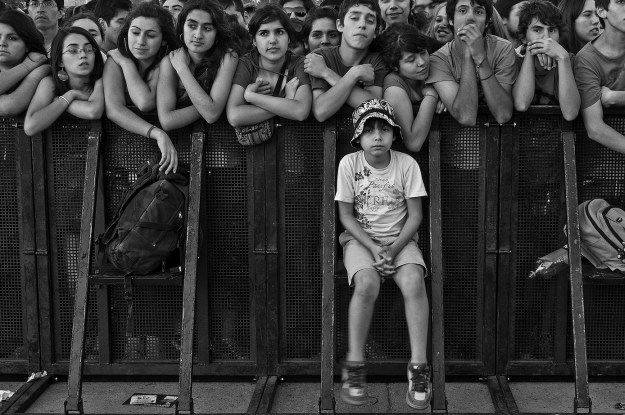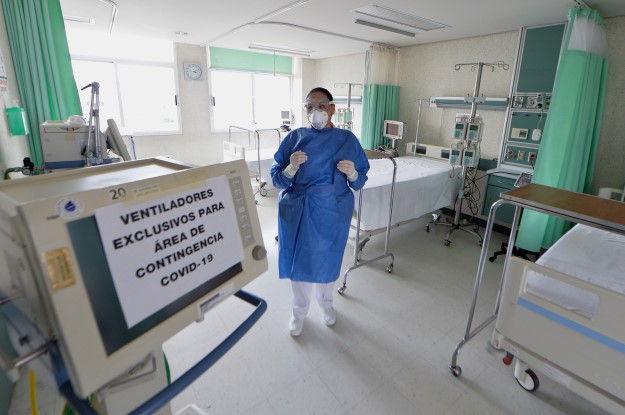This article was updated on May 4.
Latin America and the Caribbean are on course for back-to-back years of recession for the first time in 35 years, but the pain isn’t being spread equally.
With some of the highest jobless rates of any age group in the region, young Latin Americans have proven particularly vulnerable to the ongoing economic downturn. Youth unemployment rose in 2015 for the first time in several years, and is expected to worsen this year due to the combination of weak economic demand and a mismatch between the skills of new job-seekers and the needs of employers.
“Unemployment goes up quicker for youths when corporations see expectations are low for future growth,” said Jürgen Weller, author of an upcoming report on unemployment for the Economic Commission for Latin America and the Caribbean (ECLAC). “They stop hiring before they start laying off, and this affects the people looking for their first jobs.”
Policymakers have long warned of a “lost generation” in Latin America, a threat that appeared to take on new weight when youth unemployment rose last year to nearly three points above the global average, according to the annual labor overview from the International Labor Organization (ILO). Youth unemployment surged in the first three quarters of 2015 to 15.3 percent from 14.5 percent in the same period in 2014, meaning there are roughly 22 million people ages 15 to 24 neither working nor studying in the region.
This bucks a global trend of a stabilizing youth unemployment rate of about 13 percent, according to the ILO. Compared to 2012, the youth unemployment rate has decreased by 1.4 percentage points in developed economies and the European Union. Without policy change, the ILO warned, the situation will worsen for Latin America amid the region’s economic struggles.
“We’re in a situation with a not very bright prospectus,” said Weller, who spoke to AQ by phone from Santiago, Chile. “In 2016 we will see rising unemployment and general youth unemployment.”
The issue tends to be drowned out in the greater economic discussion. Last week, the International Monetary Fund (IMF) forecast the regional economy in Latin America and the Caribbean to shrink 0.5 percent in 2016 on top of last year’s 0.1 percent contraction, but also noted rosily that “relatively tight labor markets…continue to support consumption.”
To be sure, not all Latin American countries are seeing worsening labor-market conditions. The unemployment rate rose only in six out of 18 countries with data last year, and in most countries real wages rose, according to Weller. But he adds that the trend is for “a more generalized worsening, mainly in the South American countries.”
Indeed, the economic region of Central America and Mexico is forecast to grow 2.6 percent this year, according to ECLAC, while South America is expected to contract 1.9 percent due primarily to the economic crisis in Latin America’s largest economy, Brazil, which shed more than 1.5 million jobs last year amid its worst recession in over a century. The ILO’s labor overview pegs Brazilian youth unemployment at 19.8 percent, though others estimate it as high as 27 percent.
The problem isn’t just in Brazil. Uruguay has the continent’s highest youth unemployment rate at 22.1 percent, while Costa Rica has Central America’s highest rate at 22.6 percent. According to Weller, this is in part because university graduates in these wealthier countries of the region would rather be unemployed than take jobs outside their chosen profession. By contrast, uneducated youths in poorer nations don’t have high expectations and can’t afford to be unemployed, adds Weller, pointing to Guatemala’s low youth jobless rate of about 5 percent.
“A growing issue is unemployment among young people from middle classes with high levels of education,” concurred Dr. Gonzalo A. Saraví, a sociologist at the Center for Research and Higher Education in Social Anthropology (CIESAS, by its abbreviation in Spanish) in Mexico City. “Factors behind this are on one hand a mismatch between the credentials or specializations and the need of the labor market demand, and on the other hand the weak economic growth and a significant expansion of education.”
Saraví said the informal economy employs about half of Latin America’s total economically active population and 60 percent of young workers ages 15 to 24 – with the percentage even higher in nations like Guatemala and Honduras. By contrast, Uruguay and Costa Rica have largely regulated labor markets, which offer more stability and security but with the tradeoff of a higher barrier to entry.
According to Saraví and others, the fix is two-fold. For one, economies need to start growing again. “If we don’t have a growing and regulated economy, sectorial policies or programs cannot solve these problems,” Saraví told AQ.
In the meantime, policymakers can work with employers and universities to ensure that graduates are trained with the right skills to immediately enter the workforce, said Weller. The region has abundant legislation on the creation of formal jobs, but only a few countries have youth-focused legislation, according to a 2015 ILO report on youth labor in Latin America. Positive examples include Chile offering employers subsidies for hiring low-income youths, Uruguay giving tax breaks to companies that hire young workers, and Brazil mandating by law that medium and large-sized businesses offer internship training.
“This is an ongoing policy task to bring the worlds of education and labor together,” said Weller, who is optimistic for the future of Latin America’s youth.
“One year or two years of crisis is not enough to turn them into a lost generation,” he added. “They’ve seen that things can be better.”
—
Kurczy is a special correspondent for AQ.






